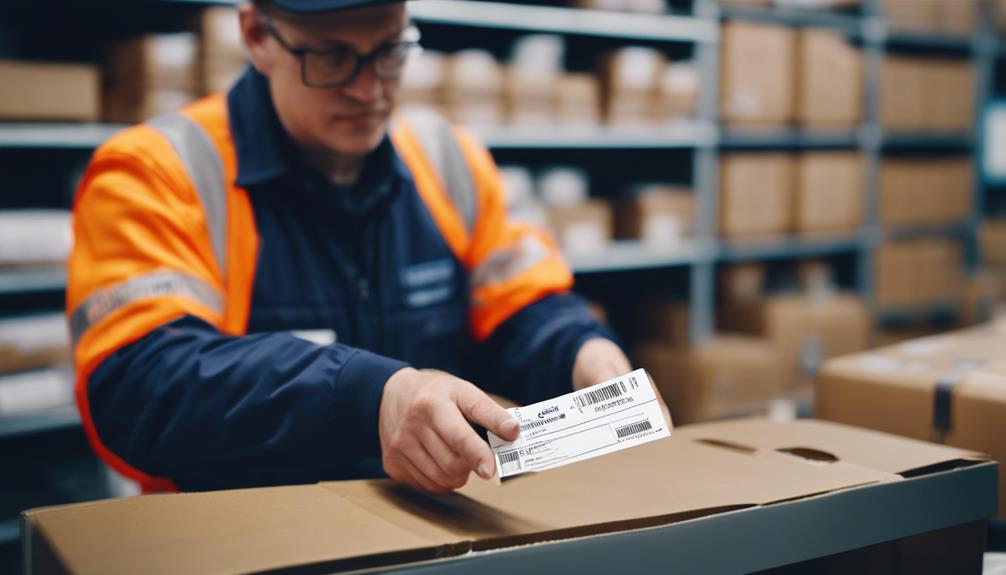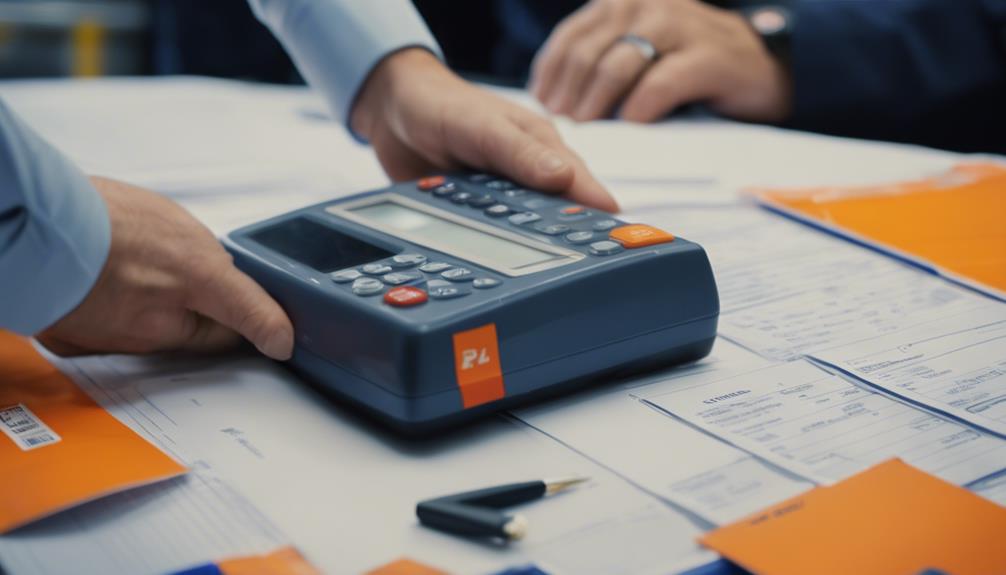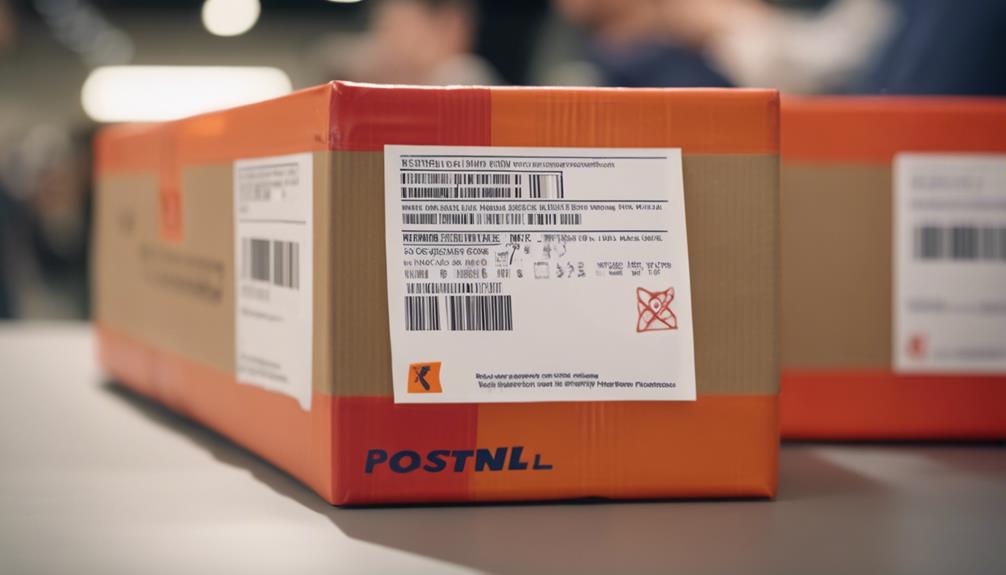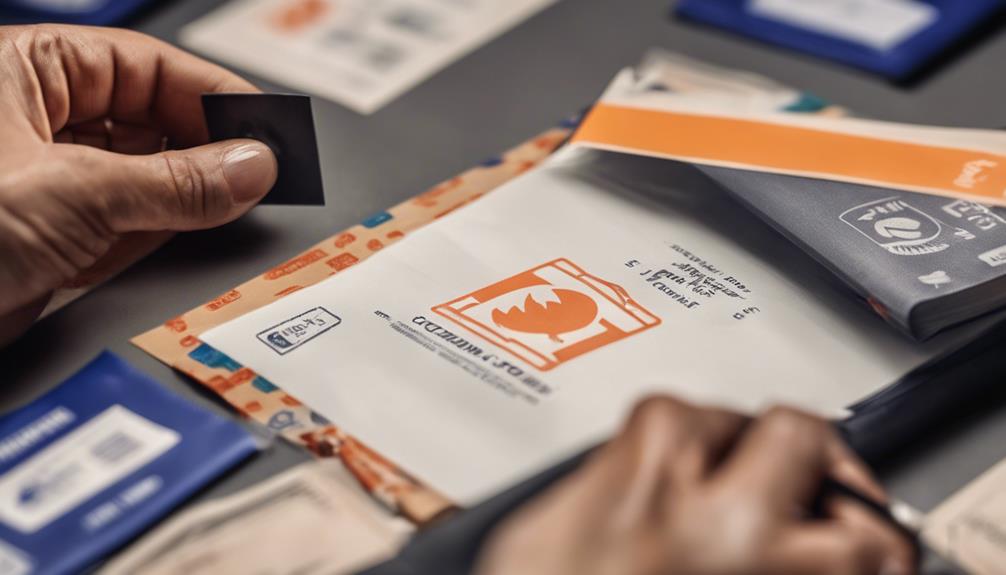Understanding your PostNL package's customs process is essential for smooth clearance. Customs officials begin processing upon receiving pre-declaration data, followed by inspections and duty assessments based on shipment information. Being aware of potential delays allows for informed expectations. Duties and taxes vary by item value and destination rules, emphasizing compliance to avoid extra charges. Customs flag packages for inaccurate details, sparking thorough scrutiny. Timely communication with customs authorities for delays, along with tracking your package's progress, is key. And remember, a detailed understanding of customs procedures guarantees a seamless experience for your PostNL package.
Key Takeaways
- PostNL packages may undergo customs processing upon arrival.
- Duties and taxes are based on item value and destination rules.
- Customs delays can occur due to high package volumes.
- Accurate declaration details prevent customs flagging.
Customs Processing Initiation

Upon the arrival of your PostNL package in the destination country, the phrase 'Pre Declaration of the Item has Been Received by Customs' signifies the commencement of customs processing procedures.
This customs notification is of utmost significance as it initiates package inspection procedures. Customs officials will meticulously examine the declaration data provided by PostNL and may conduct a physical inspection of the package contents to ascertain they align with the information declared.
This step is essential for verifying the accuracy of the shipment details and determining any duties or taxes applicable. Understanding the significance of this initial customs processing stage can help in anticipating potential delays and facilitating a smooth clearance process for your PostNL package.
Duties, Taxes, and Clearance
The calculation and assessment of duties, taxes, and clearance decisions for PostNL packages are vital stages in the international shipping process. Customs exemptions and import regulations play a significant role in determining the fees and actions required for package release.
Duties and taxes are typically calculated based on the declared item value and destination country rules. Compliance with regulations is important to avoid delays or additional charges.
Understanding the de minimus thresholds, which can range from $20 to $150, is essential when importing goods. Clear and accurate shipping documentation is critical to prevent customs flagging and guarantee a smooth clearance process.
Familiarizing oneself with the import regulations of the destination country can help streamline customs procedures.
Factors Affecting Processing Time

Efficient processing time for PostNL packages is influenced by various factors that impact the customs clearance and delivery process.
One key factor affecting processing efficiency is the customs workload at the time of package arrival. High volumes of packages requiring customs inspection can lead to delays in clearance and delivery.
Additionally, the accuracy and completeness of the declaration data provided by PostNL can greatly impact processing time. Clear and detailed declarations facilitate quicker customs assessments, reducing the time needed for clearance.
Monitoring and managing the customs workload, along with ensuring accurate declaration submissions, are essential in expediting the processing of PostNL packages for timely delivery to recipients.
Detailed Declaration Assessment
When conducting a detailed declaration assessment for PostNL packages, customs authorities meticulously scrutinize the accuracy and completeness of the submitted declaration data. This process is vital to guarantee compliance with customs regulations and verify that the information provided aligns with the actual contents of the package.
Declaration accuracy is essential as discrepancies or inaccuracies can lead to further inspection or delays in customs clearance. Customs regulations dictate the specific requirements for declaration submissions, including item values, descriptions, and quantities.
Duty and Tax Calculation

Detailed declaration assessments play a critical role in ensuring accurate duty and tax calculations for PostNL packages, aligning with customs regulations and facilitating a smooth customs clearance process.
Duty exemptions are granted based on specific criteria, such as the type of item being shipped or the value of the package.
Tax thresholds determine the point at which taxes are levied on imported goods, with different thresholds set by destination countries. Understanding these thresholds is essential for both senders and recipients to anticipate potential duties and taxes that may apply to their shipments.
Reasons for Customs Flagging
Understanding the factors that may lead to customs flagging is essential for senders and recipients shipping packages through PostNL.
Packages may be flagged for exceeding customs thresholds, having large or bulky items, or containing inaccurate shipping paperwork.
Customs inspections are conducted to guarantee package compliance with declarations, with duties and taxes calculated based on value and destination country rules.
De minimis thresholds, typically around $20, may apply, and certain items incur higher duty rates based on commodity type and regulations.
Shipping terms like Delivered Duty Paid (DDP) or Delivered Duty Unpaid (DDU) can impact fee responsibility.
Being aware of these reasons for customs flagging can help in guaranteeing a smooth shipping process.
Addressing Customs Delays

To guarantee a smooth shipping process when encountering customs delays, it is important to understand how to address and navigate potential issues efficiently.
Communication with customs authorities and utilizing package tracking services are essential steps to mitigate delays.
In cases of extended customs processing, contacting PostNL customer service for updates is recommended. Informing the sender about any delays promptly can help in resolving issues swiftly.
While customs clearance typically takes 1-2 weeks, remaining patient during this period is imperative. If customs hold is due to unpaid fees, expediting payment can facilitate the release of the package.
Conclusion
In the intricate world of international shipping, customs clearance plays a pivotal role in the delivery of PostNL packages.
Understanding the complexities of duties, taxes, and processing times is essential for a seamless shipping experience.
By unraveling the nuances of customs alerts and addressing potential delays effectively, individuals can navigate the shipping landscape with confidence.
Just as a ship sails through turbulent waters with a steady hand at the helm, knowledge of customs processes will steer your PostNL package to its destination smoothly.

Oliver Postman was born and raised in a small town in the Midwest, where his fascination with postage began at an early age. At just six years old, he stumbled upon a box of old stamps in his grandfather’s attic, igniting a passion that would shape his life.

